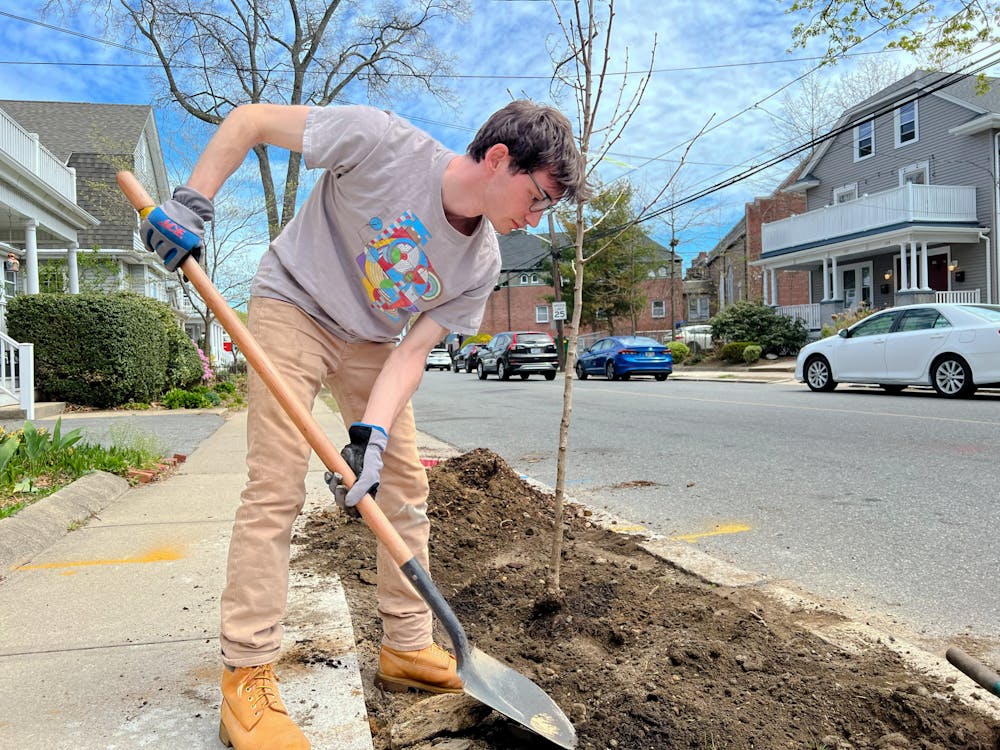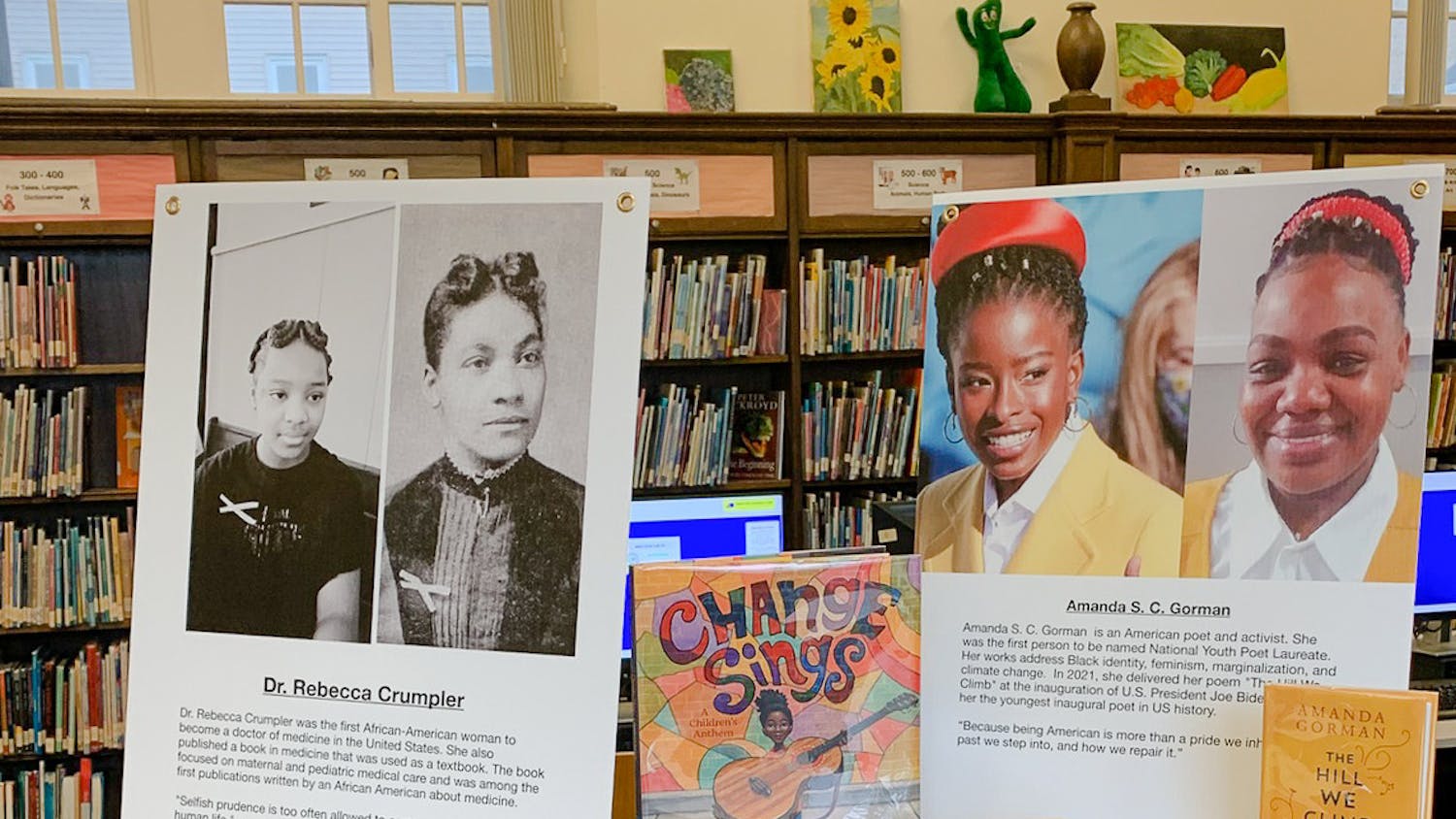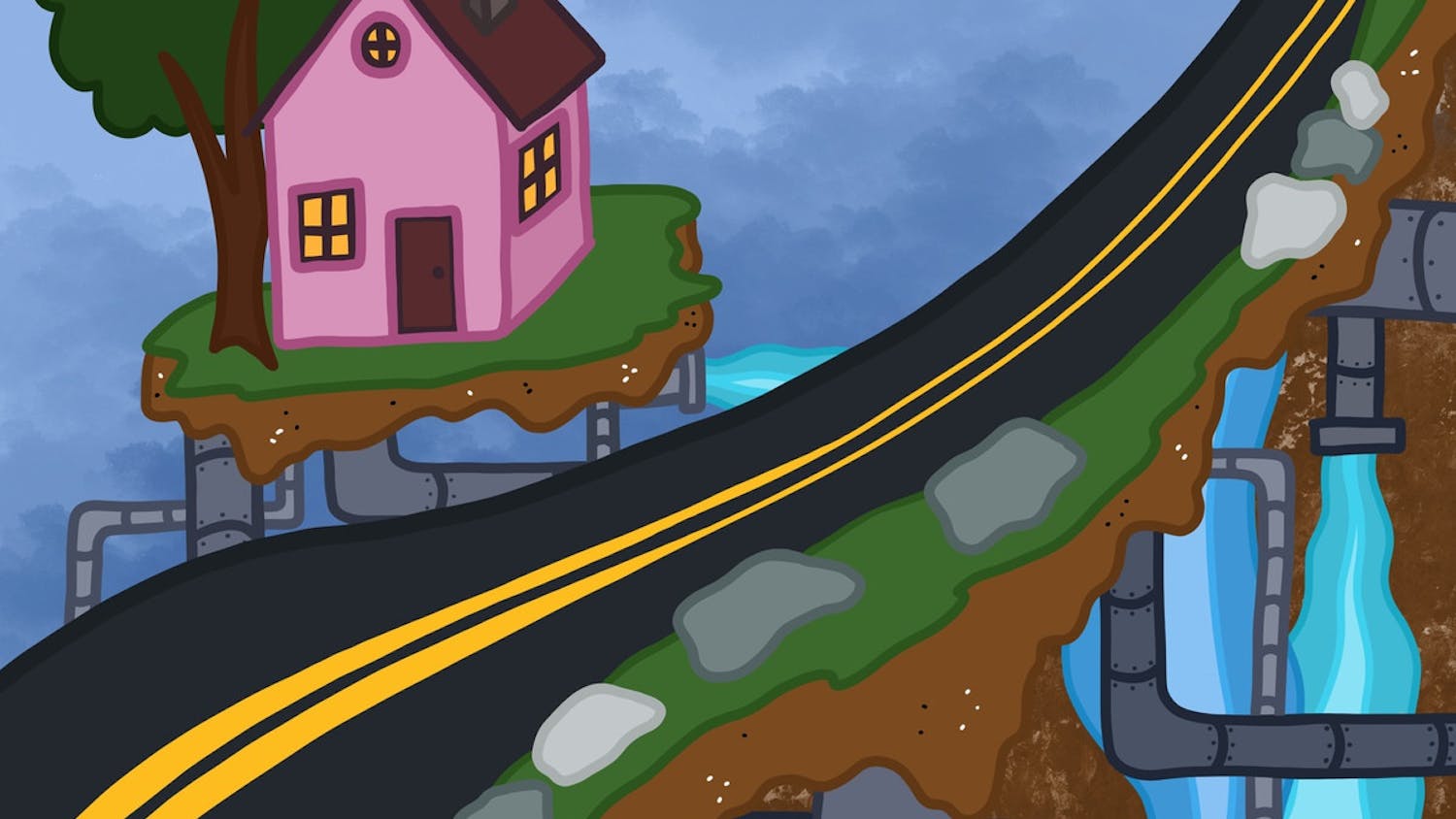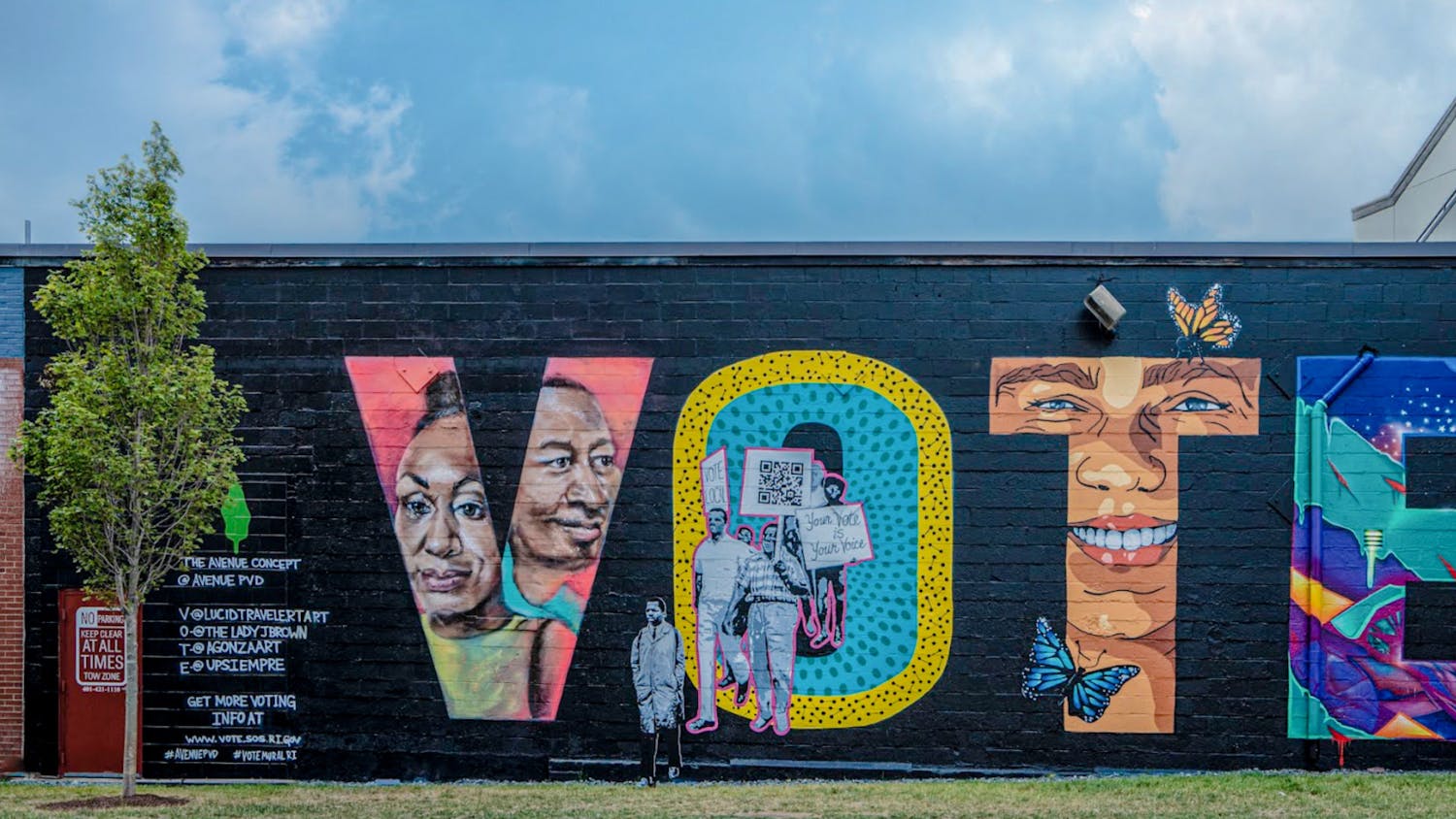“Say, ‘Trees!’”
A group of 10 volunteers gathered around a freshly planted 3-foot-tall oak tree along a Mt. Hope street Saturday afternoon. After watching leaders from the Providence Neighborhood Planting Program demonstrate how to plant the oak tree, the 10 volunteers posed for a quick photo, grabbed worn pairs of rubber gloves and set off to plant another 13 trees.
Saturday’s tree planting, led by PNPP Executive Director Cassie Tharinger, was the first of the season. According to Tharinger, PNPP is a community-led organization engaging local residents in planting and maintaining trees on city property to create a larger and more equitable urban forest. Each season, the organization — the city’s “largest force behind new tree plantings,” according to Alexander J. Elton, city forester and director of Providence’s Forestry Division — hosts anywhere from 15 to 25 plantings.
Since its founding, PNPP has planted over 14,000 street trees — around half of the city’s 27,000 street trees. The cost of each planting is split equally between the endowment and the city, Tharinger said.
When the city’s urban forest was first inventoried 15 years ago, Tharinger and other local organizations realized that low-income neighborhoods and neighborhoods of color have far fewer trees — a concept known as , which results in elevated rates and hotter in those areas.
“The fact that these communities have fewer trees, hotter summers, higher asthma rates and lower environmental privilege isn’t a coincidence — it’s the result of systemic disinvestment and racist policy, from ‘redlining policies’ that denied loans to those in ‘high-risk’ neighborhoods to ‘urban renewal’ projects that marked entire communities of color as ‘blighted’ and in need of clearance,” according to the released in 2022.
Two years ago, PNPP formed a coalition with other local organizations — including , and the Parks Department Forestry Division — to begin work on the . According to Jordan Schmolka, the PVD Tree Plan co-coordinator at PNPP, the PVD Tree Plan is a “community-led planning process to establish a vision and roadmap for achieving tree equity in Providence and building an urban forest that is really robust and resilient.”
The PVD Tree Plan, tentatively set for release in June according to Elton and Schmolka, will include recommendations, goals and initiatives created by a steering committee of urban forestry professionals, members of local organizations and community representatives from low-canopy areas. The plan’s primary goal is to achieve a “” of at least 80 trees in every neighborhood in 10 years. Reaching that goal would require over 30,000 new trees, Elton said — a goal that will require PNPP to begin planting on private property.
Tree equity scores are calculated by American Forests’s and evaluate tree canopy, demographics, surface temperatures, income and health, among other factors. While the areas surrounding Brown have equity scores ranging from 88 to 100 — with 100 representing the ideal — some neighborhoods on the city’s south side have scores in the 60s.
Since 2022, the steering committee has conducted surveys and outreach to collect opinions on Providence’s urban forest. For Dwayne Keys, the volunteer chairperson of the South Providence Neighborhood Association, South Providence’s low tree equity score was not surprising. "When this information was presented to the neighborhood, … it added to our already existing feelings and challenges of inequity on the south side,” Keys said.
The plan, Schmolka said, emphasizes urban forestry in “communities that have historically been excluded from experiencing the benefits of the urban forest, particularly neighborhoods of color that have been redlined and experienced decades of neglect and disinvestment.”
“No matter where you live in a city, you should be able to enjoy the benefits that trees provide,” Tharinger said.
Street trees offer wide-ranging benefits, according to the Tree Equity Maps Zine. In addition to reducing carbon emissions, trees provide shade and cool their surroundings. Neighborhoods in Providence with fewer trees can see temperatures of up to 20º F higher than their shadier counterparts, Schmolka said.
Higher concentrations of trees also improve , according to Elton. Trees also increase property value by making neighborhoods cooler and more pleasant, Schmolka noted.
But increases in property value aren’t always welcome. One of the main concerns surrounding the PVD Tree Plan, according to Schmolka, is the possibility of “creating a highway for gentrifiers.”
“A really critical part of this work is accompanying it with really strong anti-displacement strategies and policies and making sure that at all levels, the work of urban forestry is community-controlled on a neighborhood level,” Schmolka said.
One of the main pillars of both the PVD Tree Plan and PNPP, Tharinger said, is community engagement when “deciding where they want to plant trees.”
“If someone doesn’t want a tree in front of their house, then it’s not going to survive,” she said.
Many PNPP tree plantings, like Saturday’s, come from requests: Residents can ask for trees to be planted in front of their houses or in their neighborhoods. Others are organized through school and organizational events, Tharinger said.
And not everyone has the time or money to take care of a tree — even if they need or want one.
“Part of what the PVD Tree Plan steering committee is focusing on and discussing is providing avenues for people that don’t have the resources … to care for the trees,” Elton said.
While many South Providence residents support the Tree Plan, Keys noted that very few have the time or energy to devote to achieving tree equity. “The issue is that there are so many other things that are priorities to the neighborhood,” Keys said. “It’s hard to have a conversation about tree equity when we’re having a conversation about people trying to stay in the neighborhood.”
To alleviate residents’ concerns and ensure that newly planted trees are properly cared for, the plan will contain multiple recommendations on developing the forestry workforce — everywhere from local tree watering to city urban foresters, according to Schmolka. Maintaining trees "is work, and that work deserves compensation,” she said.
“We're excited about the Tree Plan and about sharing it with the community,” Elton said. “We’re optimistic that it will be embraced throughout the community, but it’s going to be decades of work.”
Julianna Chang is a University News Editor who oversees the academics and advising and student government beats. A sophomore from the Bay Area, Julianna is studying Biology and Political Science on the pre-medical track. When she's not in class or in the office, she can be found eating some type of noodle soup and devouring bad books.




